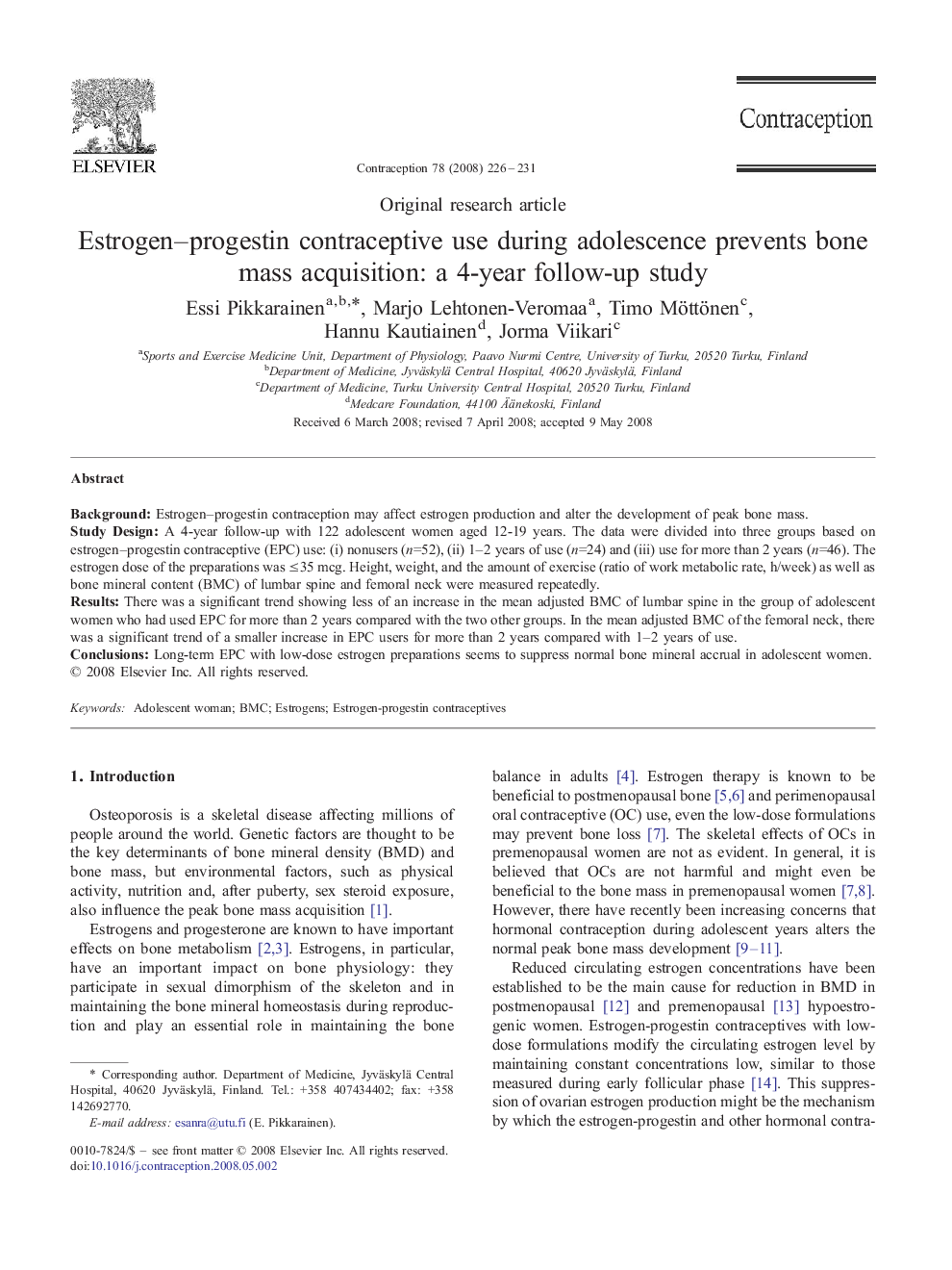| کد مقاله | کد نشریه | سال انتشار | مقاله انگلیسی | نسخه تمام متن |
|---|---|---|---|---|
| 3915533 | 1251512 | 2008 | 6 صفحه PDF | دانلود رایگان |

BackgroundEstrogen–progestin contraception may affect estrogen production and alter the development of peak bone mass.Study DesignA 4-year follow-up with 122 adolescent women aged 12-19 years. The data were divided into three groups based on estrogen–progestin contraceptive (EPC) use: (i) nonusers (n=52), (ii) 1–2 years of use (n=24) and (iii) use for more than 2 years (n=46). The estrogen dose of the preparations was ≤35 mcg. Height, weight, and the amount of exercise (ratio of work metabolic rate, h/week) as well as bone mineral content (BMC) of lumbar spine and femoral neck were measured repeatedly.ResultsThere was a significant trend showing less of an increase in the mean adjusted BMC of lumbar spine in the group of adolescent women who had used EPC for more than 2 years compared with the two other groups. In the mean adjusted BMC of the femoral neck, there was a significant trend of a smaller increase in EPC users for more than 2 years compared with 1–2 years of use.ConclusionsLong-term EPC with low-dose estrogen preparations seems to suppress normal bone mineral accrual in adolescent women.
Journal: Contraception - Volume 78, Issue 3, September 2008, Pages 226–231